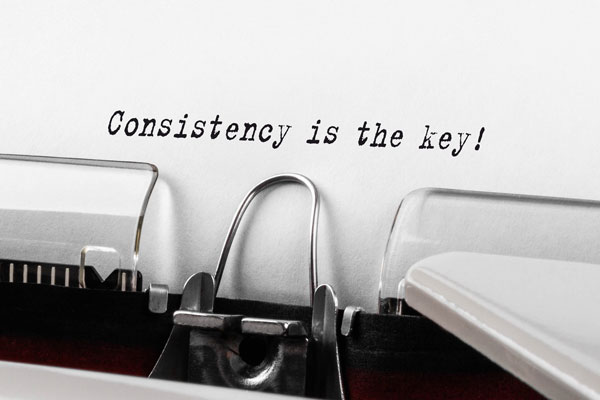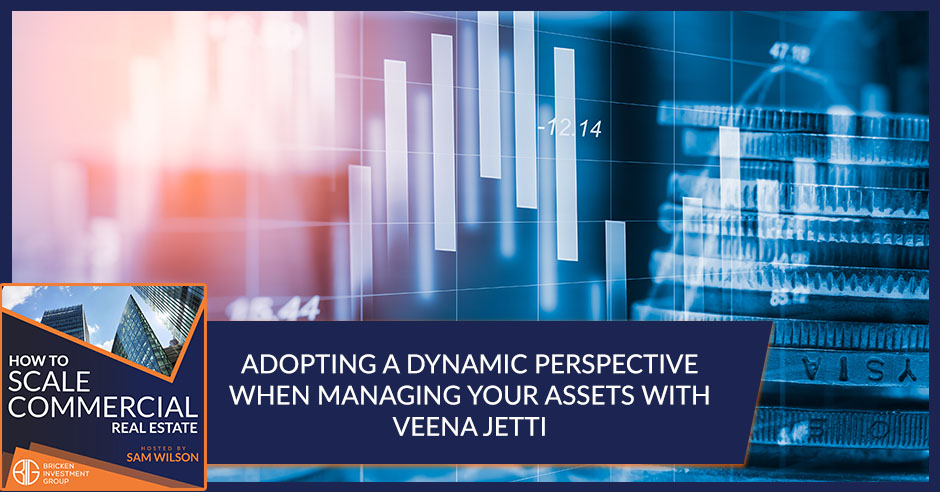When targeting, acquiring, managing, and operating assets, you need to be dynamic. You need to be able to pivot when needed. No deal in real estate is the same, there will always be surprises. Join Sam Wilson as he sits down with the Founding Partner of Vive Funds, Veena Jetti. Veena will discuss how you can find the right strategy and marketing plan so that you can raise capital. Learn what she does in value add real estate and how she manages deals one by one. Adopt the dynamic perspective today!
—
Watch the episode here:
Listen to the podcast here:
Adopting A Dynamic Perspective When Managing Your Assets With Veena Jetti
Veena Jetti is the founding partner of Vive Funds. She’s based in Dallas, Texas. They are doing all sorts of amazing things. I’m excited to have Veena on the show. They’ve closed enormous transactions outside of Atlanta. They’ve got an enormous fund as well that they are raising for now and are rocking it in the real estate space. Veena, welcome to the show.
Sam, thanks for having me. I’m excited to be here.
The pleasure’s mine. Same three questions I ask everybody who comes to the show. Can you quickly tell us where did you start? Where are you now? How did you get there?
I don’t know how quickly I can do it but I’m going to do my best. I come from a real estate family. My mom was a successful real estate investor. Not quite at this scale that I’m at now but she is the one who gave me my roots in real estate investing and my foundation. I graduated undergrad when I was twenty with my degree in Finance, went into Corporate America and made a bunch of money for other people. I ultimately left one of the large real estate investment firms in DC in 2012 to start investing for myself and continue to scale up from there.
We are a large multifamily owner-operator. We target assets that are 200 units and up in our core markets. We specifically focus on value-add assets either through operational efficiencies or value-add to interior and exterior renovations, preferably some combination. How I got here was honestly persistence. I think continuing to be persistent about how we can improve our craft and get better every time we do a deal. I learned from it and improved my process. Even with the latest deal that we closed, I’ve learned so much from that. I’ve improved the process so that the next time is better.
That’s a lot of moving pieces there in a few short years. I love the idea of persistence. What has sometimes been making you think you go, “That was a time that I had to push through?”
Every deal I’ve ever closed, from the smallest one to the most recent. The thing is, everyone feels like it should be rinse-and-repeat once you’ve done it so many times but you and I both know it never is. There’s always a surprise. You’re always adjusting. The last couple of closings we’ve had have been very smooth transitions. There’s always something we learn. We do a post-close team huddle and see what we did right, wrong, do better, things we want to add into our process. I make a lot of notes, especially around our PSA so how can we make that better for the next time?
Notes on your Purchase and Sale Agreement, how can that be better?
Yeah. There are a lot of things that you can put into PSA either as a buyer or seller or things that you can word in a certain way. An example would be publicity around your deal. In the past, we had closed a deal where we had agreed that we would not publicly announce the purchase price or the seller or the deal itself, which when we’re doing 506(c) raises, makes it more challenging not to be able to advertise the deal that you’re raising for.

Dynamic Perspective: In real estate, persistence is key. Continuing to be persistent about how you can improve your craft and get better every time you do a deal is important.
The changes we’ve made are now we look at that a little more closely to make sure we’re not violating the terms of our PSA but when we’re on the seller side, we like to control that information going out. For what it’s worth, we like to say, “You can disclose this information but you have to get approval to disclose anything else for 90 days post-close,” or whatever that looks like. We started paying attention to those little nuances in our PSA itself.
Let’s get maybe mechanical on this and dig in a little bit. I want to hear more on this. What are the differences on the buy and the sell side, the pieces of information you want to control and why?
In this market, we’re in a seller’s market still in the multifamily arena. You can mostly dictate the terms of this pretty broadly, especially because we raise our funds from retail capital. I have an investor who hears me on a podcast or meets me at a conference who wants to invest with us. They might not know that there’s a deal available unless they see it on my social media like my Instagram or whatever.
When you can’t talk about it during the inspection period or do due diligence, it limits my ability to connect with new investors. Luckily, our database is very strong so we have a lot of current and repeat investors that it’s not a big issue but for a newer investor, it could be a huge problem. On the buy-side, you want to make sure that whatever your marketing plan is to raise your capital, that you’re able to disclose the details accordingly or take the traffic from your different media sources and direct it in the right place. That’s what you want to look at on the buy-side.
On the sell side, you may want to control that because you might have investors in the deal that you want to make sure you’re the first to tell them, “This asset is selling or it’s sold.” You want to make sure maybe that they’re not getting this information from somebody else. Another example would be I don’t necessarily want to be selling an asset and then have a buyer go out and say, “It was completely mismanaged. Here’s all the opportunity on it.”
If there’s overlap, it does not look good for you as the seller, even if you’re hitting your price point. I think that from the sell side, your incentive is a little bit different in how you are trying to control that narrative. As a buyer, the focus is around being able to raise the capital or bring in the capital that you need.
I wouldn’t have thought about either one of those. I’ve often wondered why sometimes and I always assumed it was a 506(b) deal or something. We can’t talk about it on the show but maybe it is because they are restricted under the terms of the purchase and sale agreement.
Real estate is never rinsed and repeated. There’s always a surprise and something new to learn.
It probably is that it is 506(b). We do 506(c). raises. It’s especially important for us to be able to speak of our deals.
Why is it negate half the value in a 506(c) raise?
We might as well do a 506(b). It’s a lot less of a threshold to verify accreditation. In a 506(b), it makes sense why but it could be that they can’t talk about it per their PSA or are limited in what they can say about their deal.
You said you focused on 200 units and up. I’ve heard 100 and up. How did you pick 200?
It’s like the minimum amount we will look at. We have a very strong preference for 300 and up. It’s like the bare minimum of what we would look at in our markets. It comes down to the ability for us to scale to be able to realize operational efficiencies and have enough movement or pivot ability in our core markets. In Atlanta, we have about $250 million in assets that we’ve closed on. That gives us the ability to maximize the efficiency across the asset. For example, our landscaping contracts are cheaper than when we had one asset. We find that the sweet spot is between $70 million, $100 million, $110 million, $120 million for us to be able to capitalize the deal comfortably, guarantee the deal, close and operate it efficiently in our portfolio.
Once you get into the big leagues, especially at 300 units and up, you’re playing with the institutional players. What’s your competitive edge in that space?
It’s tough because we’re not competing on price. We are competing on terms. We are private placement so we have the ability to be very agile with our capital and we can stack it efficiently. As an example, the last deal that we won, we closed it in 42 days with no extensions, which is fast. It put us under a lot of pressure. Especially during the holidays, it’s a tough time to have capital coming in.
I think that being able to be flexible and put money hard on day one, we don’t have the same red tape that institutional funds typically will have. We’re the ones controlling the deals. We can oftentimes greenlight something very quickly. We can move fast. I think the other thing too is all of the sponsors on our deal are young. A lot of the sellers want to transact with us again and they know that this isn’t the first or only deal that they’re going to do with us. They’re going to do many deals and there’s a long horizon in front of us.
When you say stack capital efficiently, what does that mean?
We can go in and alter how we structure our payments. We tend to stick to a very vanilla, boring structure but we have the ability to adjust those as needed. Maybe in a certain situation, I would have to defer a part of an acquisition fee until the exit of a deal or waive it altogether. Those are things that we can do. We don’t have mandates where we have to follow. This is always the acquisition fee. We can make sure we’re taking care of our investors first and the deal is still working. We get paid along the way when we perform.

Dynamic Perspective: On the buy-side, you want to make sure that whatever your marketing plan is, it’s to raise your capital. Be able to disclose the details accordingly and direct your traffic to the right places.
Talk to us about your fund. What has been the most surprising thing you’ve discovered as you’ve launched and are growing your fund?
There’s like new surprising things. Every like every week, there’s something new and I’m like, “I didn’t think about it that way but it makes sense.” I’m very in tune with my investors. I like to know them personally. I like to know what their criteria are, what their avatar is and one thing I totally did not expect is when we launched our funds. Our assets, we offer direct investment and investment through our fund.
For us, it doesn’t matter where they come from because we don’t double the fee. It’s the investor’s preference for it. What I found was a lot of investors invested in the fund as their routine investment. Every quarter, they set aside X dollars or every six months, I set aside X dollars to invest in the rev fund. When we put an asset out that’s going into the fund, I saw them invest into rev and then directly into the asset, which I did not expect at all.
The reason they were doing it is that they wanted the diversification of the fund. They were like, “I liked this one asset because of the year of construction or I have extra funds this month or I want to bet heavier on this asset than through the fund diversification. That was something that totally took me back. I get it. I personally prefer to invest directly into each asset but I understand why someone wants the set and forget it mindset. They want to do a rev fund and then add individual investments like deals that go into our fund.
What are some downsides to someone from a limited partner perspective? What are some down and plus sides of a fund versus a direct investment?
The same thing that’s the pro is also the con. It’s controlling where your funds are going and what you’re invested into. If you’re somebody that likes to choose direct investments, you don’t necessarily get that opportunity. If you want to choose your allocation within each asset, you don’t get that opportunity with rev. It’s up to you what your portfolio looks like, what it calls for.
Take us maybe all the way back to the first deal. What was it like getting that deal and your capital? Talk to us about the capital raise journey. That’s a common thing that people talk about. It seems like you’ve got it figured out at this point. Talk to us about that process.
To scale, make sure you realize operational efficiencies and that you have enough pivot ability in your core markets.
It was hard. Especially now in our world, people talk about like, “We’ll raise some capital because there’s a lot of people raising capital now.” I think I cried myself to sleep for six weeks straight, thinking that I had put everything at risk. We had all this hard money we were going to lose. We weren’t going to close the deal. No one wanted to write me a check. I remember at one point I went to my husband. I was like, “Honey, we’re going to have to sell everything we own. We’re going to have to liquidate all of the retirement savings. I have to sell your car.” He’s like, “What is happening?” I was like, “I need $1.2 million in 30 days. I don’t have that.”
He was like, “Let’s talk about this more.” He’s not involved in real estate so he didn’t know. That was how the first experience but what I will say I learned from that is once you have your first raise under your belt, it gets exponentially easier with every time. The more you’re able to put into place different systems and different processes, it streamlines raising capital significantly. I always tell people that I don’t raise capital when I have a deal on the table.
I raise capital between my deals because you simply don’t have enough time to get to know an investor. It’s a trust business. They need to know who you are, why they should invest with you, what your deals typically look like. Now that I don’t have a deal that’s actively in the process of closing now is when I will raise the vast majority of my capital. By the time I have a deal, all they’re doing is they’re vetting the deal itself and the returns of the deal for their portfolio.
I want to circle back to how you got the 1.2. I was at a conference and there was someone there they were like, “I need X number of dollars by this date.” I said, “You could tell. Good luck. I doubt you’re going to make it because your timeline is ticking. I can tell with the tenacity at which you’re attacking this and it’s not going to get done.” Tell us how you did not sell the house and your husband’s cars.
I tapped into my network in a way that I was very uncomfortable doing on the first raise because I’m asking someone to trust me without having ever raised capital before or ever having investor capital. I will say a significant portion of it was investors that prior to me going out and officially trying to raise capital, had said, “Can you teach me how to do this on the weekend?” I was like, “No because I work 100 hours a week and you do that at whatever profession, busy doctor.”

Dynamic Perspective: Be able to alter how you structure your payments. So you can stick to a very vanilla and boring structure, but you should have the ability to adjust those as needed.
They would say, “I’ll write you a check and then you invest your money, where is my money, where you invest your money and I’ll invest alongside you.” Those were some of the people I had to go back to and speak to them. On the first deal, we structured it very investor-friendly. There were not a whole lot of fees promoting any of that involved in our first deal because we could not afford to do it, mainly because we needed investors to write us a check.
We had to make sure that our interests were aligned correctly. Ultimately, I reached back into relationships that I had that I wasn’t initially going to approach and went to and said, “Give me a shot, test it out, put in a small amount, whatever that is, $25,000, $50,000. Let me show you what we can do.” I do the KPI track. The most are the advertising of investment but also more important than that is how many investors repeat invest with me. I care about that the most. I don’t care if someone’s investing $50,000 but I want them to invest a second time because I want that long-term relationship.
Veena, I’ve learned so much. Thanks for taking the time to pull back the curtains on your business, what you guys do and how you do it. Congrats on getting this latest $81.5 million deal in Atlanta across the finish line. Lots of things for our readers to aspire to here. Let’s jump into the final four questions. The first one is, what is one tool or resource you find you can’t live without?
It’s my laptop and my cell phone. I need to be connected at all times for my business.
If you could avoid one mistake in real estate, what would it be and how would you avoid it?
I think in the theme of raising capital. It doesn’t wait until you have a deal to raise capital and make those connections. Now make that network, especially if you’re doing a 506(b) raise because you need to establish a substantiated relationship before the deal is on the table. Make sure you understand your SCC rules. Go out and raise that capital before you have a deal.
Don’t raise capital when you have a deal on the table. Raise capital in between your deals.
When it comes to investing in the world, what’s one thing you’re doing to make the world a better place?
We are big on philanthropy. Every time we close the deal, we have a tradition of choosing a charity and usually, we’ll choose something meaningful to us at that time. I do the second round of fundraising, where I invite anybody who made money from the deal or who invested in the deal even to donate to whichever charity is the chosen one for that deal.
If our readers want to get in touch with you, what is the best way to do that?
They can go to my website, ViveFunds.com. You can find me on all the social media. @VeenaJetti is pretty much my handle across social media.
Veena, thank you for your time. I appreciate it.
Thank you.
—
Thank you for reading. If you can, do me a favor and subscribe and leave us a review on Apple Podcasts, Spotify, Google Podcasts, whatever platform you use, if you can do that for us, that would be a fantastic help for the show. It helps us both attract new readers as well as rank higher on those directories. I appreciate you reading. Thanks so much. I hope to catch you on the next episode.
Important Links:
- Vive Funds
- Instagram – Venna Jetti
- Twitter – Veena Jetti
- Apple Podcasts – How to Scale Commercial Real Estate
- Spotify – How to Scale Commercial Real Estate
- Google Podcasts – How to Scale Commercial Real Estate
About Veena Jetti
 Veena Jetti (VEE-nuh JEH-tee) is the Founding Partner of Vive (rhymes with “five”) Funds, a unique commercial real estate firm that specializes in curating conservative opportunities for investors. Veena brings a dynamic perspective to targeting, acquiring, managing, and operating assets using best practices combined with cutting-edge technologies. Her professional expertise includes driving corporate strategy and business development opportunities.
Veena Jetti (VEE-nuh JEH-tee) is the Founding Partner of Vive (rhymes with “five”) Funds, a unique commercial real estate firm that specializes in curating conservative opportunities for investors. Veena brings a dynamic perspective to targeting, acquiring, managing, and operating assets using best practices combined with cutting-edge technologies. Her professional expertise includes driving corporate strategy and business development opportunities.




0 Comments